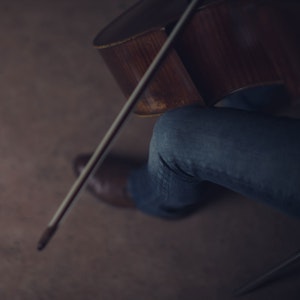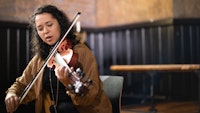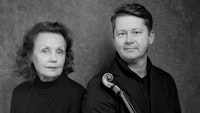Jakob Kullberg’s fellowship project sets out to investigate, and thereby physically and mentally explore, an expanded creative practice as a cellist. The core of his work accommodates several extensive elaborations on music by composers such as Kaija Saariaho, Per Nørgård, Henrik Hellstenius and Bent Sørensen where he disputes conventions and traditional hierarchies that exist within the artificial dichotomy of creating and re-creating music. Kullberg formulates his objective as an endeavour to establish a type of collaboration between composer and performer which makes the two equal interpreters of each other by exploring different dialogical approaches in the composition process. Kullberg introduces the idea of transmogrification as a key concept and methodological 'leitmotif' – associating it with questions of 'werktreue' and fidelity in relation to the canonical as a specific strategy of internalization and immersion. This project deals with the hierarchy between composer and performer, and how these established roles can become more equal and more creative on both sides of the fence.
Material and methods
Kullberg works with four composers. For each composer the project will be divided in two types of processes.
1) Transmogrification: to change in appearance or form, especially strangely or grotesquely.
As a preparatory process each of these four composers have given Kullberg assignments that resemble transcriptions in nature, albeit rather impossible or at least less than obvious suggestions for transcription. Impossible in the sense that the assigned tasks cannot be carried out simply by redistributing the musical components in a new way, or by doubling or omitting existing components. The idea is that each assignment from the composers forces Kullberg into a gray area that combines simple re-arrangement with actual composition. Hence the idea to use the word transmogrification instead of transcription. It is of key importance to the idea behind transmogrification, that Kullberg strives to be creative inside the framework of each composition and that he attempts to stay inside the style of a given composer. The point with this process is to get deeper into each composer’s music and to start working with their musical material in a more creative way. The idea stems from the experience of making such a creative transcription of Per Nørgård’s music in close collaboration with the composer.
2) Dialogical Composition.
The secondary process is the collaboration on the composition of new works by each of the four composers. Here the idea is to attempt to meet somewhere in the middle and with each composer try to establish ways with which Kullberg creative potential can be utilised whilst still staying within each composer’s musical world.
Documentation
The project is titled Transmogrification. Dialogic Composition.
Artistic Result
The artistic result of Kullberg’s project includes an artistic presentation in the form of a concert at the Norwegian Academy of Music on February 2nd, 2022 and a series of submitted audio recordings:
- Per Nørgård, Remembering Child – recording / Remembering Child – Nørgård manuscript / Remembering Child – solo cello part
- Per Nørgård, 1st Cello Concerto (original version) – recording / Per Nørgård, 1st Cello Concerto (version for chamber orchestra) – recording / 1st Cello Concerto (original version) – Nørgård manuscript / 1st Cello Concerto (version for chamber orchestra) – score of the first movement
- Per Nørgård, Three Nocturnal Movements – recording / Three Nocturnal Movements – full score / Three Nocturnal Movements – full score (version for chamber orchestra)
- Kaija Saariaho, 2nd Cello Concerto – recording / 2nd Cello Concerto – full score / Jakob Kullberg, Cadenza for Saarihao’s 2nd Cello Concerto – score
- Syracuse Improvisation – recording
- Bent Sørensen, Nocturne XI (original version) – Sørensen manuscript / Bent Sørensen, Nocturne XI (Kullberg: orchestration and transmogrification) – score
- Henrik Hellstenius, Rift for String Trio – recording / Henrik Hellstenius, Rift for String Trio – score



